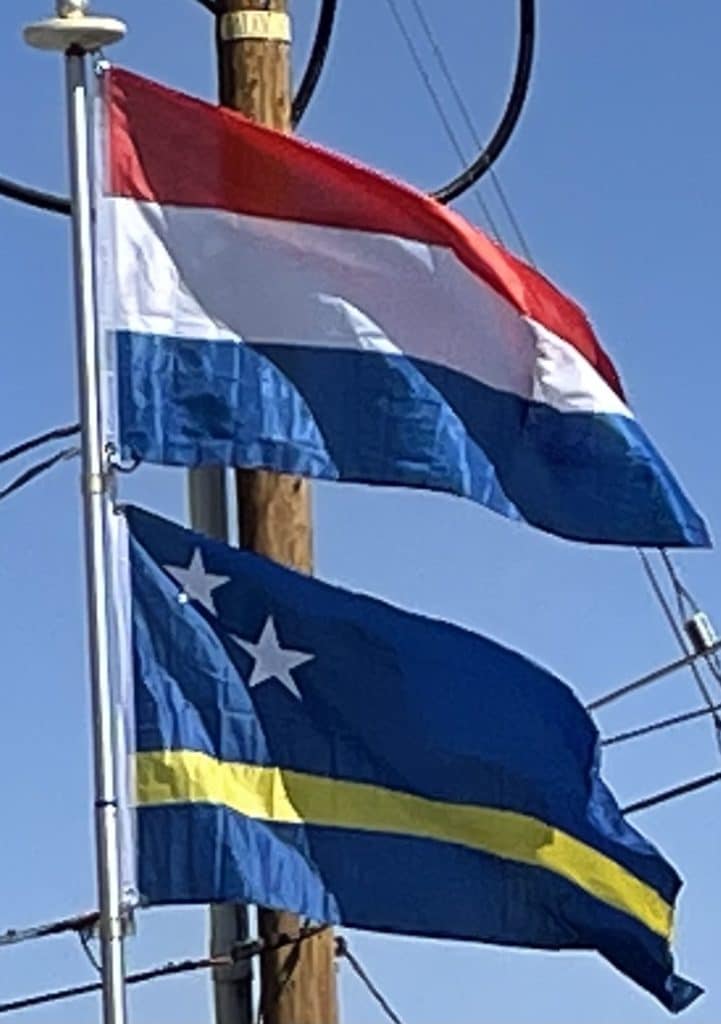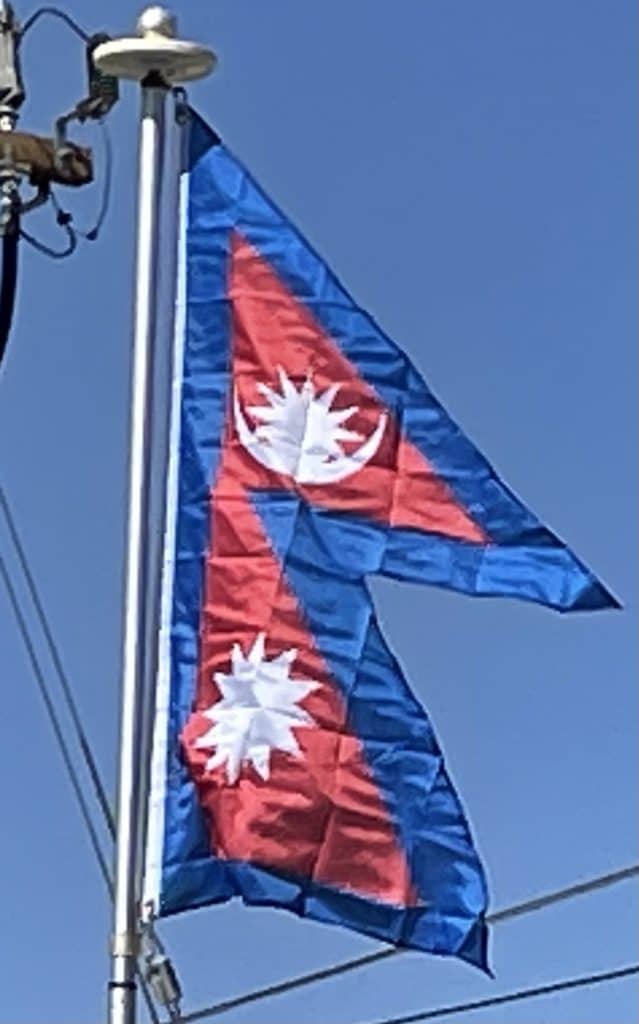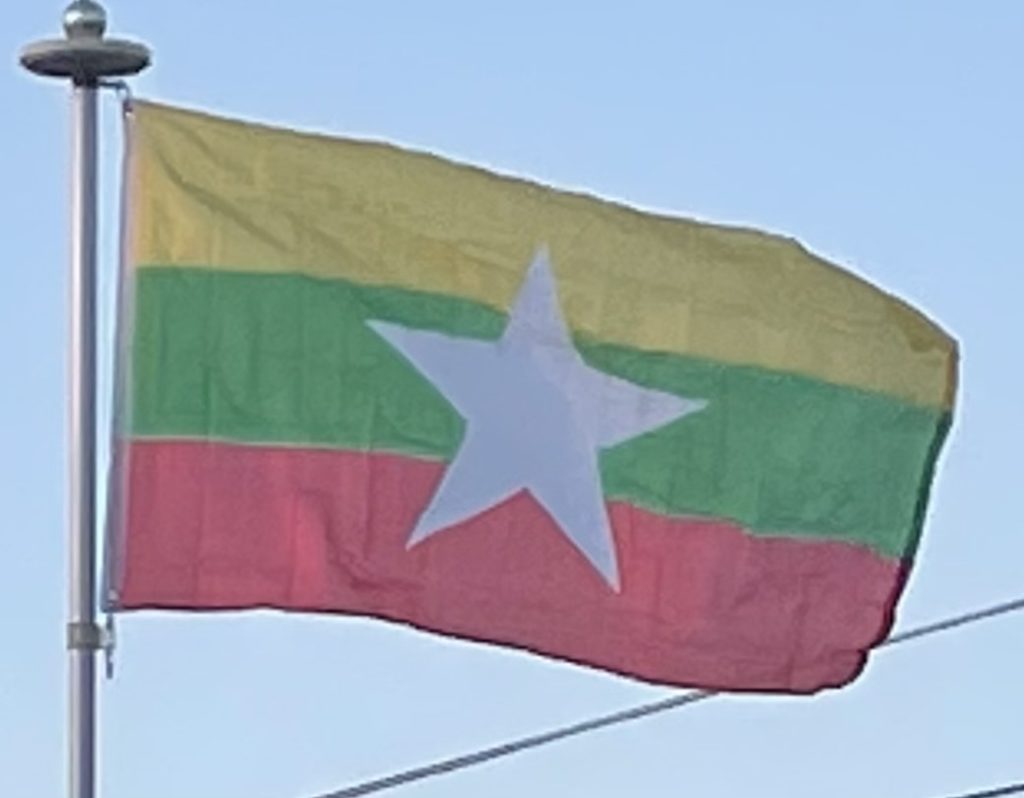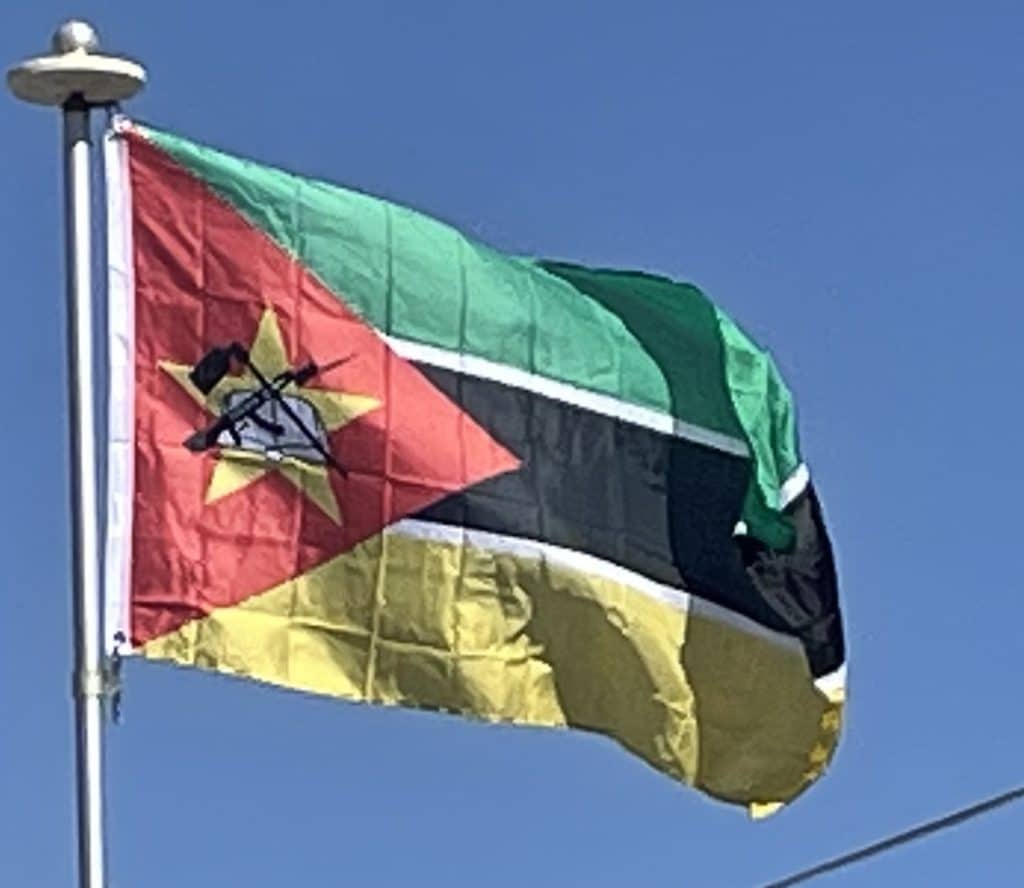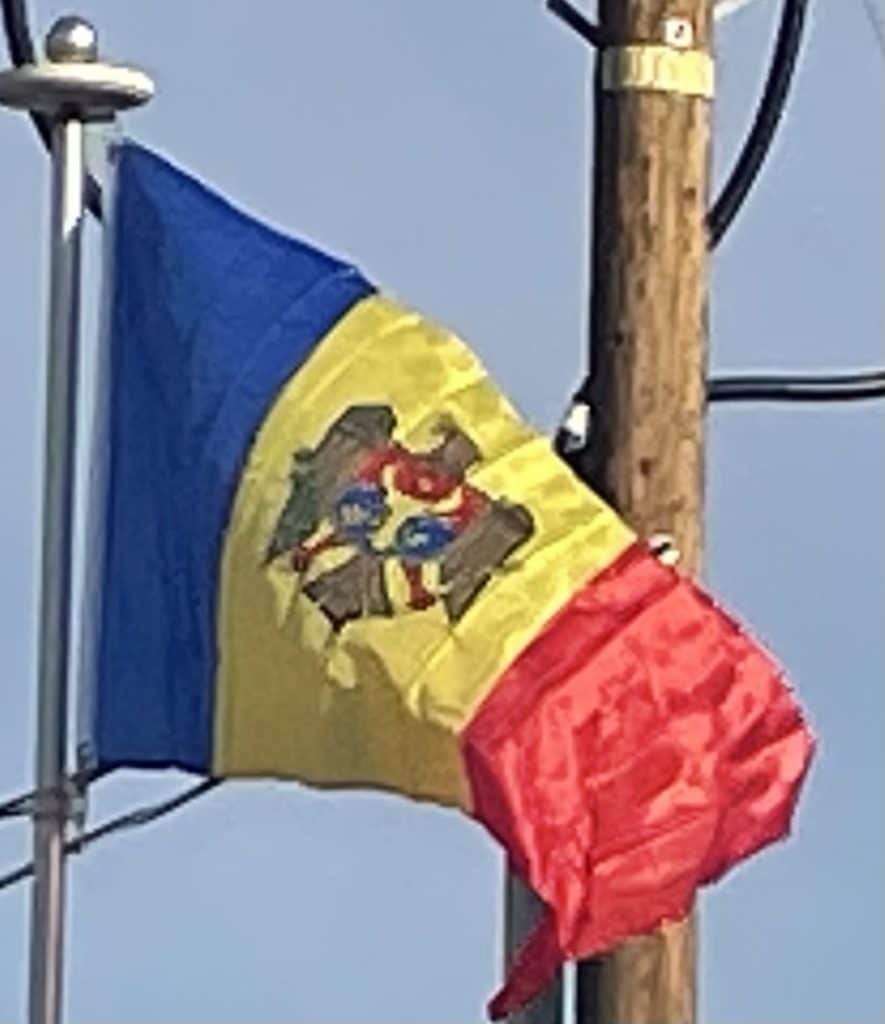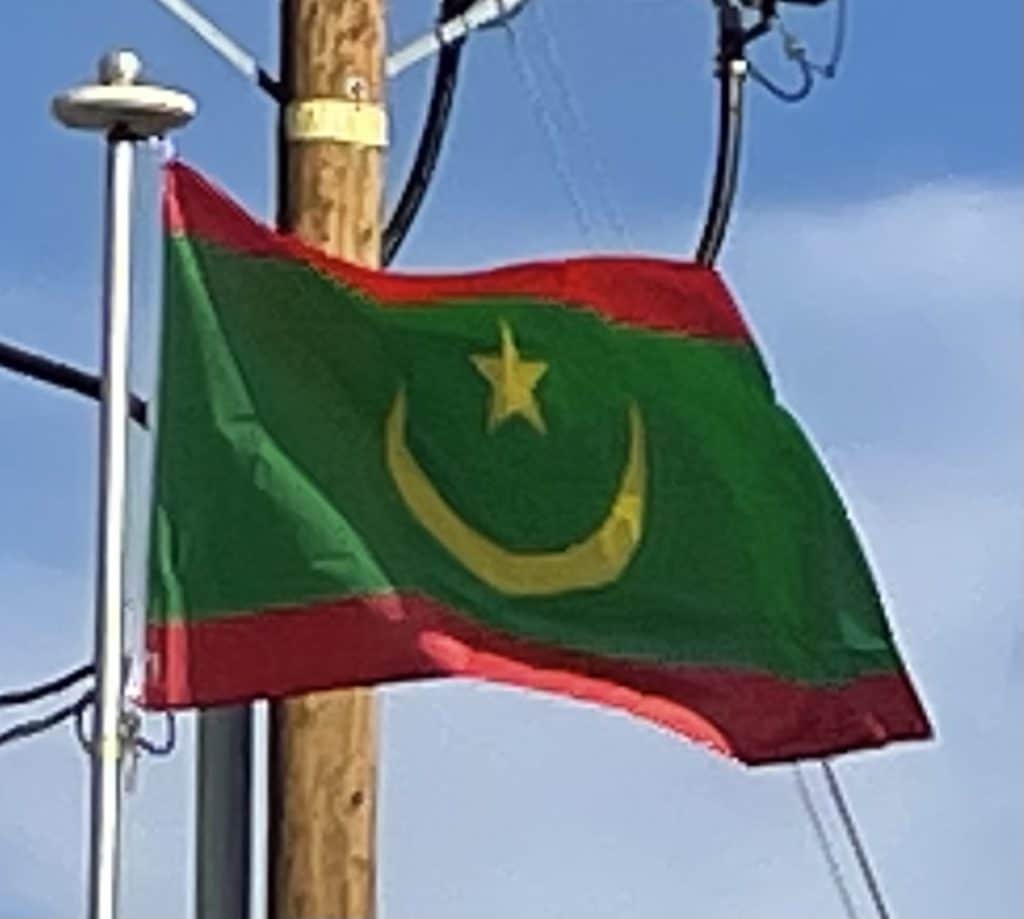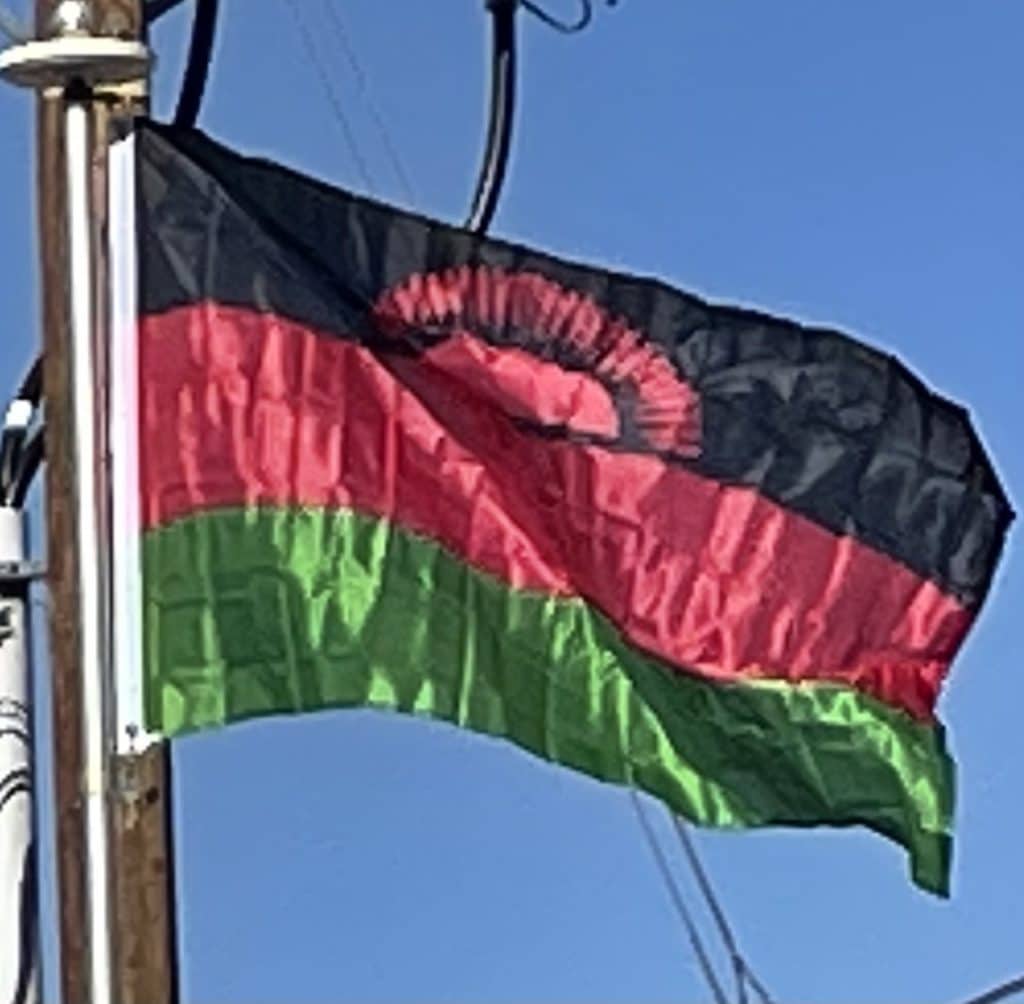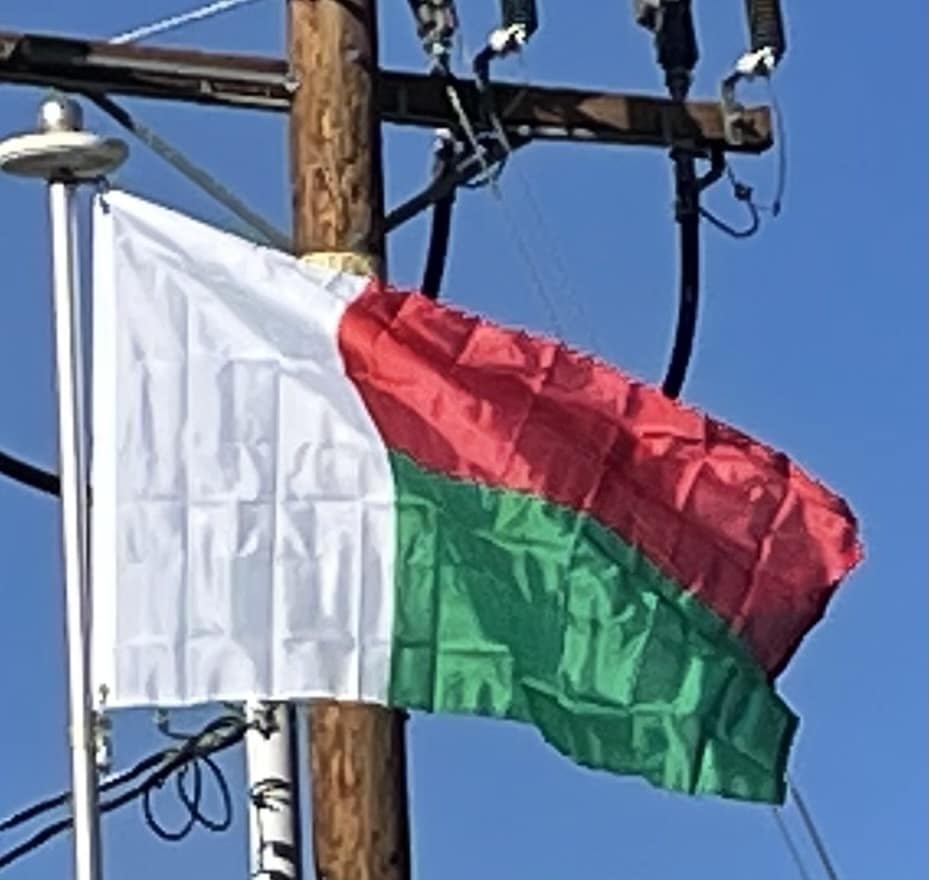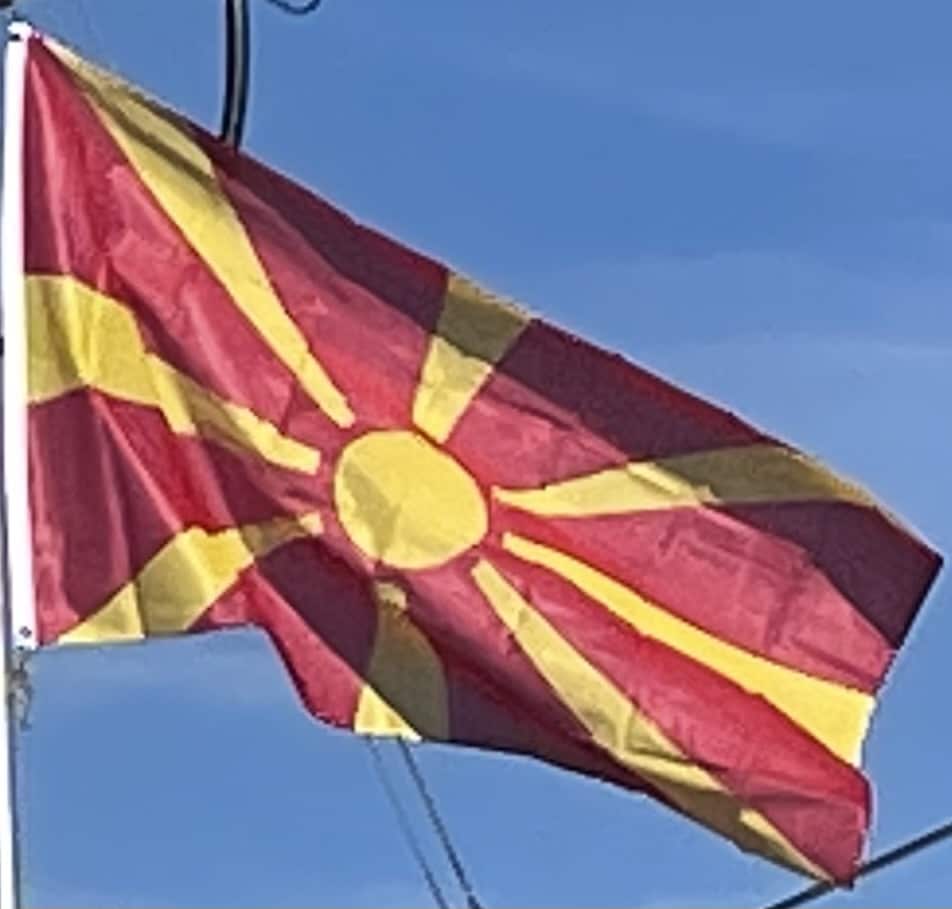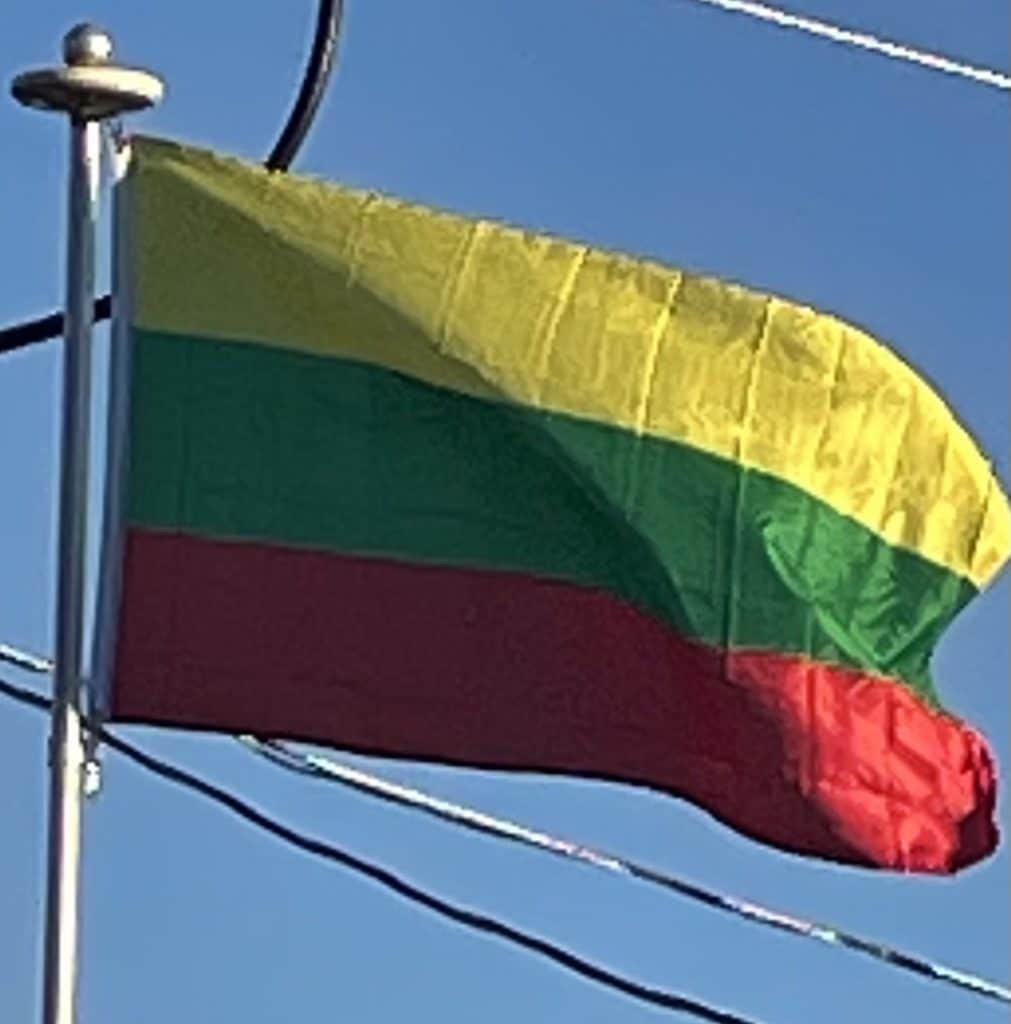Curaçao
The national flag of Curaçao represents the country of Curaçao as well as the island area within the Netherlands Antilles from 1984 until its dissolution in 2010. The flag was flown for Curaçao and Dependencies for which the flag of the Netherlands was never used.
The flag is a blue field with a horizontal yellow stripe slightly below the midline and two white, five-pointed stars in the canton. The blue symbolises the sea and sky (the bottom and top blue sections, respectively), divided by a yellow stroke representing the bright sun which bathes the island. The two stars represent Curaçao and Klein Curaçao, with the five points on each star symbolise the five continents from which Curaçao’s people descend.
